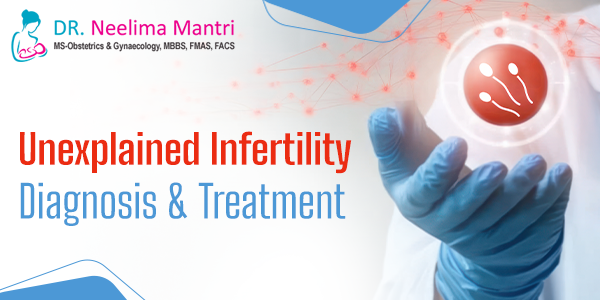You are trying to conceive. You have done all the right things. The tests seem normal. But still, there is no pregnancy. This is often where the term “unexplained infertility” comes in. It means everything looks fine on paper, yet conception does not happen. It can feel frustrating, but there are clear next steps.
What Is Unexplained Infertility?
Unexplained infertility is a diagnosis made when all standard fertility tests come back normal. Ovulation is regular. Sperm count is healthy. Tubes are open. The uterus shows no major issues. But after a year or more of trying, there is still no success.
It does not mean there is no reason. It just means the cause has not been found yet. Often, it involves subtle issues like egg quality, sperm function at a molecular level, or timing that cannot be seen through routine testing.
What Tests Are Done for Unexplained Infertility?
Before calling it unexplained, doctors will run a full fertility workup.
- Ovulation tracking to confirm regular egg release
- Hormone level tests for FSH, LH, AMH, prolactin, and thyroid
- Pelvic ultrasound to assess the uterus and ovaries
- Semen analysis for count, shape, and movement
- HSG (hysterosalpingogram) to check the fallopian tubes
- STI screenings
- Basic genetic screening in some cases
So, what tests are done for unexplained infertility? These are the standard checks. If all results appear normal, the diagnosis becomes unexplained infertility.
What Is the Best Treatment for Unexplained Infertility?
There is no one-size plan. The treatment depends on age, medical history, and how long you have been trying. In younger couples, doctors may suggest a few more months of trying with timed intercourse. In others, there is the use of assisted methods. What then is the most appropriate treatment of unexplained infertility? The most typical ones are as follows:
- Ovulation induction with IUI: This is often the first step. It boosts egg release and increases the chances of sperm reaching the egg.
- In vitro fertilisation (IVF): IVF allows fertilisation outside the body. This bypasses many small factors that may be blocking natural conception.
- ICSI: A single sperm is injected directly into the egg, used in IVF cycles when there may be hidden sperm issues.
The best fertility treatment options will be chosen based on how your body responds and how much time you are willing to commit.
How Successful Is Treatment for Unexplained Infertility?
Many couples do conceive after treatment. IUI success rates are about 10 to 20 percent per cycle. IVF offers higher chances, especially when combined with advanced methods like embryo freezing or ICSI.
So, how successful is treatment for unexplained infertility? It depends on age, ovarian reserve, and treatment choice. IVF often gives the best outcome within three cycles. Emotional and physical support during this time also improves the journey. Connect with the best gynaecologist in Mumbai for infertility to avail immediate solutions.
Final Thoughts: Keep Moving Forward
Unexplained infertility can feel like a dead end. But in reality, it opens the door to closer observation and targeted treatment. Many couples in the same situation do go on to have healthy pregnancies.
If the journey feels uncertain, take one step at a time. Ask questions. Track each phase. Work with a doctor who listens. Sometimes, the answer is not in the test results but in the personalised care plan that follows.



